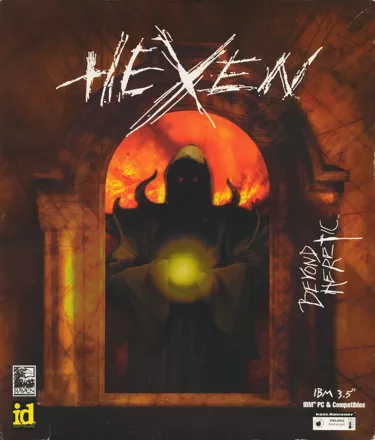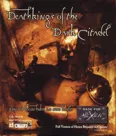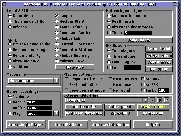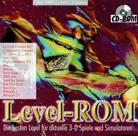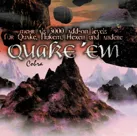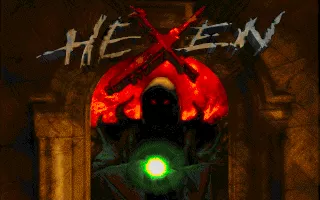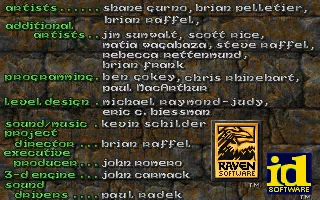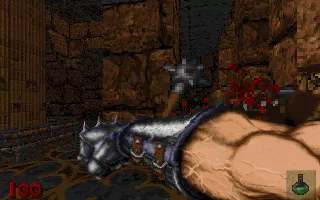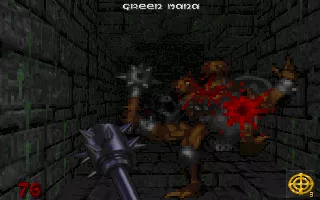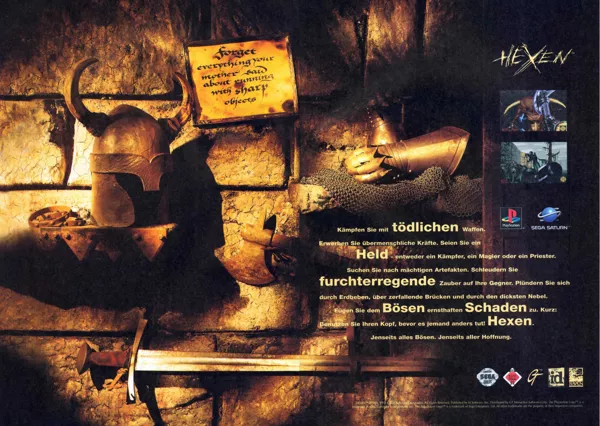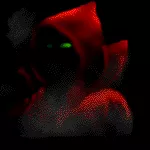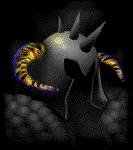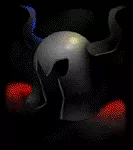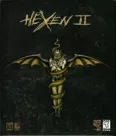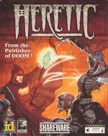Hexen: Beyond Heretic
Description official descriptions
Hexen is the sequel to Heretic. While the Heretic was destroying D'Sparil, the other two Serpent Riders have come to your dimension and slaughtered everyone. Or so they thought. Three humans have managed to escape with their lives and now seek vengeance against the Serpent Rider Korax who remains in their world.
Like Heretic, Hexen is a fantasy game based on an enhanced DOOM engine. All of Heretic's innovations like vertical looking, flying, and the inventory system have been carried over. The new major changes this time around are three characters for the player to choose from and the level hub system. The characters are the Fighter, the Cleric, and the Mage. Each one has four unique weapons and different levels of speed and armor.
The hub system steps away from the traditional "single levels stringed along into episodes" system which had been carried over into the FPS genre from sidescrollers and made popular by Wolfenstein 3D. In Hexen's hub system each episode is still made up of interconnected levels, but most of the levels are connected to a single "hub" level through portals. There are also portals between some of the "spoke" levels. Many of the puzzles in Hexen require travel back and forth between different levels.
Other innovations in Hexen include weather effects, jumping, earth-quakes, and destructible objects such as trees and vases. The game also includes scripted sequences created with a language called ACS, allowing for much more complex puzzles and dramatic scenes.
Spellings
- ヘクセン - Japanese spelling (on the CD in the Japanese Sega Saturn release)
Groups +
Screenshots
Promos
Credits (DOS version)
19 People
| Artists | |
| Additional Artists | |
| Programming | |
| Level Design | |
| Sound/Music | |
| Project Director | |
| Executive Producer | |
| Engine Tools Programmer | |
| 3D Engine | |
| Sound Drivers | |
| Package Design by |
|
Reviews
Critics
Average score: 74% (based on 51 ratings)
Players
Average score: 3.7 out of 5 (based on 193 ratings with 8 reviews)
(Review from 1995) Hexen is more than just a "Doom Clone" and is worth trying.
The Good
Note: This is a review I wrote in 1995 for my High School newsletter, so don't go "wtf?" when I say things like "Best graphics" and whatnot
Released earlier this month, "Hexen" comes from Raven software and is a sequel to their previous effort, "Heretic." Heretic, while by no means a bad game, has the dubious honor of being called a "Doom clone" for mirroring the gameplay of Doom and merely swapping out the levels, weapons, and monsters. So it may come as a shock that Hexen, is NOT a Doom Clone. While you will still plow through monsters and mazes running on a spruced up Doom engine, various gameplay changes make Hexen unique.
The first thing you will notice enter Hexen are the stunning visuals. Like in Heretic, Raven has reduced the level of pixelation in the graphics, meaning the enemies and objects retain clarity no matter how close up you are, and seeing as there is a greater focus on melee weapons in this game, especially for the fighter class and his mighty hammer, you are going to get up close and personal quite a bit with the nasties in this one. The audio is good, though I don't think the music will wow anyone. Rather than midi rock tunes, the music is more ambient and slow toned but it does lend a creepy feeling to the games bizarre landscape, as do many sounds such as leaves in the wind, creaking doors, dirt crumbling from rocky crags, etc. it all does a great job establishing a mood. The baddies sound as nasty as they look, and nothing beats smashing them about with a hammer as there are many appropriate thuds and of course bones cracking and wet splashes indicating you've successfully removed your foes brain.
The levels progress in a weird way, the game uses a "hub," an area you will often return to and contains the entrance to each level. You will often return to levels, running about from place to place finding switches and puzzles that unlock more areas inside each level, as well as unlocking other levels completely. Eventually you will unlock a boss, and the game will automatically send you to a new hub, essentially an automated way of picking the next episode. Hexen advances the Doom engine so that you can now fly with the appropriate power up, and just like in Heretic you can look all around and jump, meaning there are many more platform puzzles and high places. If you have vertigo, you might find Hexen a little frightening at time.
The Bad
Despite all the praise I've given the game for its technical prowess and unique gameplay elements, Hexen isn't without flaws. Some may not appreciate the switch hunting and often confusing design, it can also be said that many may not like the random death traps that rarely give any indication or forewarning of their existence. Sometimes monotony can set in from returning to levels and being faced with the fact that you've already killed most of the baddies, and the game isn't always so kind as to give you new ones, making levels seem empty at times. The puzzles can be fun, but they seem out of place in a game like this.
The Bottom Line
Hexen isn't perfect, it certainly won't replace Doom, but it's not trying to. Hexen feels like an experiment, and on many levels, it works. If you're a fan of Doom or it's "clones," but are looking for something different while you wait for IDs next project, "Quake," Hexen might appeal to you. A 3-level shareware demo can be acquired from a BBS if you have a modem, or you can always track me down and ask for a copy. The full game can be bought in a retail store or ordered. Just remember to keep it off the school computers.
DOS · by Kaddy B. (777) · 2009
A descent Medieval shooter that just tries to be too many games at once
The Good
Although two years have gone past since the release of Doom, Hexen doesn't look old for 1995, and in fact, does add something new that hasn't been possible before - this is in fact the ability to jump. Therefore like Heretic, Hexen drives the Doom engine forward 1 big step. I would also like to note that weapons look more detailed than in Heretic and Doom, but that's pretty much it. The levels, monsters and other items don't stand out with art beauty in Hexen.
The sound in Hexen does what it is supposed to, and that is building a quite creepy atmosphere. Hostile growls of monsters, creepy and fitting music combined with other game sound effects makes Hexen probably the scariest game ever released with the Doom engine (although, calling it a scary game by itself isn't quite correct, to be honest). Although like in Heretic, the composers were able to write a couple of memorable tunes in the game, most soundtracks are in fact so quiet that you might not even notice them, what's to say about memorising them after...
As for the gameplay, this is what makes Hexen the most unique - for the first time in a Doom engined shooter we are able to pick up from 3 different characters to complete the single player campaign, each having unique weapons and a unique storyline (which doesn't really change anything) and we can also play as these guys in deathmatch and co-op! Like in Heretic, we still have the inventory, where we can collect usable items. These items can heal us, make us stronger or can be used as a separate weapon against the enemies. Unlike in Heretic, this time if you for example have 2 Porkalators and go to a next level, you will still have 2 Porkalators in there. In Heretic, you would always end up with 1 of each item, which is a good improvement in Hexen. The collectible items are quite interesting in Hexen, although some of them may seem completely new and not like those you've seen in Heretic, many of these are actually the same from Heretic, just remade and with a new name. Even some weapons bare a resemblance to the ones from Heretic, the same goes to the enemies in the game, however, yet again, there are some completely new foes which are nothing like those you've seen in Heretic or even in Doom.
A big change in Hexen's gameplay over Heretic's are the levels - in this case Hexen is more similar to Half Life, because like there, if you enter a new level, you can sometimes go back, which is a good way to pick up some health or ammo from the previous level if you really need it. But going from one level to the next and back is not just for that, but it is the key to solve a puzzle in one big central level of an... umm... we'll call them episodes :). Thus Hexen is a game made up off puzzles and mystery. Still, like in Doom and Heretic, you're gonna face lots of monsters so you won't get bored... or will you? Now let me talk about what really pissed me off of this game...
The Bad
First of all - the feel of the game. Almost every level has a dark theme and uses mostly these colours - black, grey and brown, thus building (or tries to build) a Medieval scenery. But the repetitive scenery only makes this game boring as hell. Sure, you will see different areas like forests, swamps, castles, graveyards and caves, but because all of them look almost the same, it's completely impossible to navigate through them and it's very easy to get lost.
Also, almost all "puzzles" involve themselves in searching for a stupid switch, hidden somewhere in the level, or a key that must open the door, which hides yet another switch behind it!
Another complaint is the monsters - not the fact that they are stupid, but the variety is so small. In Doom and Heretic there are about 10-15 different monsters you can see in a level. But in Hexen? Let's actually start counting, how many different types of monsters are there: 2 headed guys with morning stars, flying demons, serpents, centaurs, evil priests, plus some levels have exclusive ice monsters or swamp beasts... and that's it! So, the maximum amount of different monsters you can see in a level is about 5-7, with some episodes having a boss in the end, add to that the fact that your character has basically only 4 weapons (every new weapon can be found only in the next episode, which makes it even worse) makes running through some small, repetitive corridors in search of a stupid switch rather doll quickly. And by the fact that the game has 3 different characters, it is possible that it has some replay value? I doubt that.
The Bottom Line
It is unsure for whom was Hexen developed for. I can say as a Doom fan that it's definitely not for a fan of Doom, as it lacks all of the awesomeness Doom has. As for those whose first shooter that they played was Heretic, this sequel might be worth trying out if your deep into running around Medieval castles and searching for puzzles, but if you're more of a fan of action and killing huge amounts of monsters with different weapons, Hexen is not the game for you. It might be that the reason why Hexen is not a good game like Doom or Heretic is the fact that it was probably meant to be acceptable for fans of RPG as well, as it has many similarities to RPG games (Medieval scenery, different selectable characters, puzzles to solve in big levels), however, i doubt that even they can find it a good combination of the two genres.
Good or bad, Hexen is definitely not the sequel to Heretic which i wanted it to be, which is probably my biggest complaint about this game. It's hard to tell for what kind of gamer was Hexen made, i can say only one thing: if you've never played FPS-s before, make sure Hexen is not your first FPS game. Better start out with games like Doom and Heretic.
DOS · by Medicine Man (328) · 2010
Enormous switch hunt in scary castles.
The Good
It's scary game - this vibe is achieved by gripping music and level design. You will walk in old, ruined castles, marshes, caves, chapels and other places. Sounds are wonderful - they're realistic and help building the vibes. Even Quake and Duke Nukem haven't such good ambient sounds as Hexen.
Most of Heretic's features are also present in Hexen - there's inventory (there are some new items, like Dark Servant, which summons Maulotaur to help you, however Tome of Power is absent), flying and looking up and down. Hexen also introduces jumping and scripting. So, there are earthquakes, falling bridges, and . Level design is also different - there is a "hub system", as in Quake 2 or Heretic 2.
Unlike Heretic, you can select one of three characters in the game. They have not only different look, they use completely different weapons! For example, Fighter uses weapons like axe or sword, when Mage has magical staffs. Also, multiplayer allows max. 8 players during gameplay.
The Bad
Puzzles are really difficult - In Doom and Heretic you found keys and switches in passing. Not here. You sometimes have to search for switch in four enormous levels only to reveal another switch in another level. And that switch lowers platform, there's a key on the switch, the key opens a door, behind a door there is another switch... and so on, and so on. Puzzles should be the same as in Heretic 2 - much easier and more enjoyable.
The Bottom Line
Well, if you're looking for more puzzle-oriented FPS, then Hexen is for you. Its creepy atmosphere and hordes of monsters to slay will keep you entertained.
DOS · by Sir Gofermajster (485) · 2009
Trivia
Controversy
The Steam download version of the game is listed as Windows platform because the executables are modified to use a DOSBox variant (v0.70); additionally the traditional setup.exe is missing.
It is confirmed that neither Valve or id Software contacted the DOSBox project staff and initially the game didn't includes the TXT files that must be present under the GPL license (so they failed to fulfill 2 points of the GPL license).
Two days after the launch, there was an update that includes COPYING, AUTHORS and THANKS.txt of the DOSBox 0.71.
References
- In the Necropolis, you can find graves that have the names of some of the authors written on them.
- In the first HUB, "The Seven Portals" there is a secret level hidden. Once you're in it, you can find D'Sparil's (from the original Heretic) heart in there.
- The villain's name, Korax, is derived from the scientific name of the common raven: corvus corax. This is an intentional joke as the game was developed by Raven Software.
- The first place in the game where the Porkalator artifact can be found is on Hub 2: "Caves of Circe". Circe was a character in Greek mythology, who transformed Odysseus' crew into pigs.
References to the game
The final boss of Serious Sam: The Second Encounter, Mordekai The Summoner, carries a staff very similar to the Bloodscourge, the last weapon of the Mage class in Hexen: Beyond Heretic. It should also be noted that the enemy as a whole looks very similar to D'Sparil, the final boss of Heretic.
Speech
One of the demonic sounds that the enemy Dark Bishop sometimes utters, when played backwards, actually sounds like his name.
Title
In German, "hexen" means "witches", or "casting a spell" when used as a verb. Moreover, the game has a Warlock skill level - a warlock (or "hexenmeister") is the male version of a witch.
Version differences
The PlayStation version is one of the few games on the system to require one entire memory card (all 15 blocks worth) to save just one save game.
Awards
- EGM
- 1998 Buyer's Guide - Games that Should've Stayed on the PC
Information also contributed by Dark Dante, Emepol, Macintrash, Medicine Man, Maw and Satoshi Kunsai.
Analytics
Related Sites +
-
Doomsday HQ
Home of jDoom, jHeretic, and jHexen. These are hardware accelerated ports of those games ( require original DOS versions to work). Useful to make the games prettier, extended multiplayer support, and to work perfectly on Windows Xp! -
Raven-Games
This site is dedicated to older Raven Software games. Here you can get maps and mods for Heretic, including JHexen and Koka's GLHexen, the two best hardware accelerated Hexen upgrades in existence! -
This is not your world, mortal.
official game pages at GT Interactive's website, preserved by the Wayback Machine -
Wikipedia: Hexen: Beyond Heretic
Information about Hexen: Beyond Heretic at Wikipedia
Identifiers +
Contribute
Are you familiar with this game? Help document and preserve this entry in video game history! If your contribution is approved, you will earn points and be credited as a contributor.
Contributors to this Entry
Game added by Kalirion.
Windows Apps added by Plok. Windows added by Xantheous. SEGA Saturn, Macintosh added by Kabushi. PlayStation, Nintendo 64 added by Grant McLellan.
Additional contributors: Xantheous, Emepol, Corn Popper, Alaka, Havoc Crow, Matthew Melbourne, DreinIX, Patrick Bregger, Verm --, Plok, MrFlibble.
Game added July 14, 2000. Last modified November 10, 2024.


